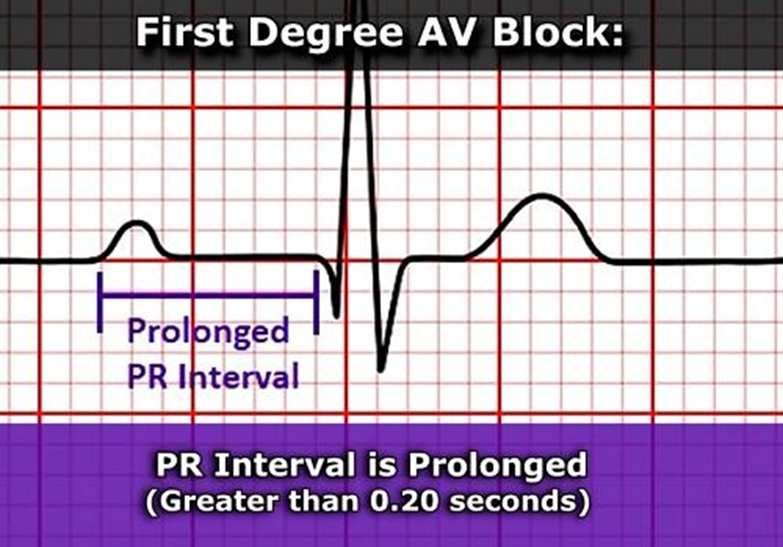A nurse is reviewing cardiac rhythms and heart blocks for a critical care course. The nurse is aware that which of the following describes first degree heart block?
The PR interval gets longer then drops.
PR interval greater than 0.20 seconds in duration
There are absent P waves
R-R is irregular
The Correct Answer is B
Rationale:
A. This describes a second-degree heart block, specifically Mobitz Type I (Wenckebach).
B. A PR interval greater than 0.20 seconds is characteristic of first-degree heart block.

C. This describes third-degree heart block, also known as complete heart block.
D. An irregular R-R interval is not specific to first-degree heart block.
Nursing Test Bank
Naxlex Comprehensive Predictor Exams
Related Questions
Correct Answer is B
Explanation
Rationale:
A. This describes a second-degree heart block, specifically Mobitz Type I (Wenckebach).
B. A PR interval greater than 0.20 seconds is characteristic of first-degree heart block.

C. This describes third-degree heart block, also known as complete heart block.
D. An irregular R-R interval is not specific to first-degree heart block.
Correct Answer is A
Explanation
Rationale:
A. Encouraging the client to participate in the cardiac rehab program is important for recovery and returning to an active lifestyle.
B. Acknowledging the doctor's expertise is important, but it does not address the client's concerns.
C. This statement may minimize the client's concerns and is not the best response.
D. This statement is not specific and may not address the client's concerns.
Whether you are a student looking to ace your exams or a practicing nurse seeking to enhance your expertise , our nursing education contents will empower you with the confidence and competence to make a difference in the lives of patients and become a respected leader in the healthcare field.
Visit Naxlex, invest in your future and unlock endless possibilities with our unparalleled nursing education contents today
Report Wrong Answer on the Current Question
Do you disagree with the answer? If yes, what is your expected answer? Explain.
Kindly be descriptive with the issue you are facing.
